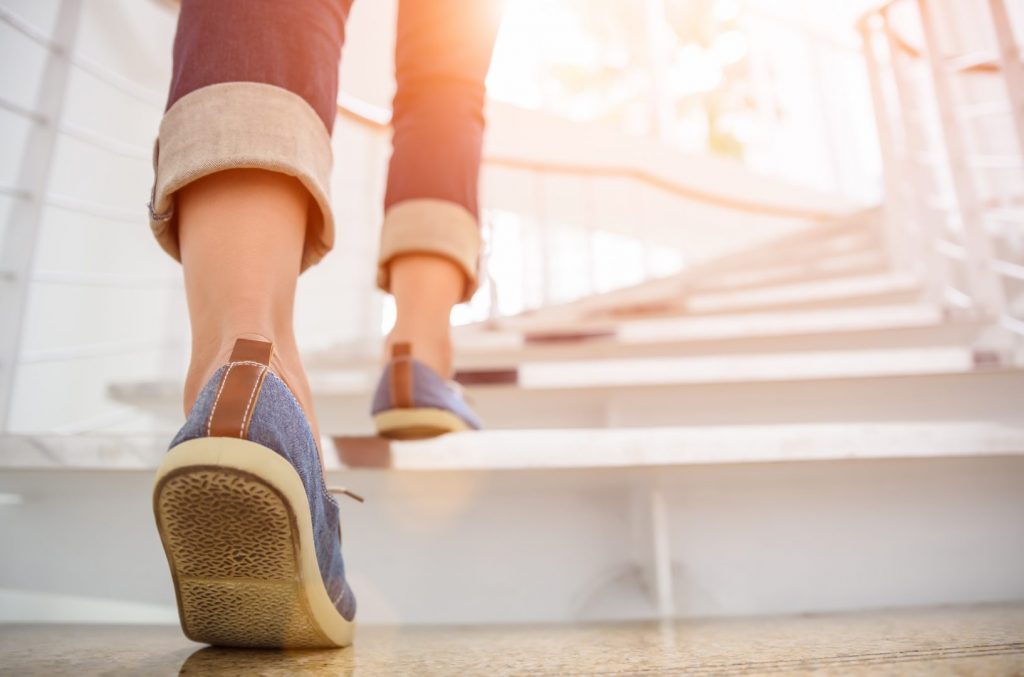
Stairs and steps are such a part of most of our homes, especially older ones, but they aren’t necessarily detrimental to our using our living space and living in it well
Stairs and steps are generally thought to be something we want to avoid as we age. True, they can present many issues – especially with the way so many of them have been constructed and installed over the years, as well as the way they have been maintained.
However, three important items to note when it comes to steps and stairs (1) they really are the same thing for most references – stairs and steps – so the words are interchangeable, although some people may prefer one term over the other or think that one term applies inside and the other outside or that it has something to do with how many of them there are in one location; (2) many architectural styles (colonial, federal. low-country, cape cod, split-level, tri-level, split-foyer, bungalow, craftsman, brownstone, most homes with basements or crawl spaces, and additional designs) have a couple of steps at a minimum to get to the front porch, landing, or stoop; and (3) the predominant trend today and in recent years (due to land costs, construction materials, labor, lot coverage, and other concerns) is to build multiple floors in a structure (at least two-floors) with all of them requiring stairs to access the second floor (even though some also have elevators included).
The long and the short of it is that stairs are everywhere and there is no getting rid of them unless a home is built from scratch without them. It is so difficult to totally eliminate the use of steps or stairs – especially with grade differences and the rolling terrain that often are present in the homesites we select for our homes and the way we complete our outdoor living areas. So, we must find a way to live with those steps and to deal with or conquer them rather than submit to them.
Whenever possible, builders and remodelers are putting the master suite on the main floor, or relocating it there, so that vertical transportation to the second floor to access sleeping and bathroom facilities is not required.
Since, for a number of reasons dating back many years, steps and stairs are part of the home environment, let’s see what type of positive influence they might have for us. Of course, just like aging in place solutions and recommendations that we make for our clients, no one idea is going to suffice for everyone. However, many people are going to be well served by having a few steps in their home.
We’re not talking about universal design because steps don’t work for everyone and they require a certain amount of physical effort to use, but they don’t call any special attention to themselves unless they have an ultramodern look with a steep design, open treads, no railings, or unusual patterns, colors, or materials.
We’re also not considering visitability where people coming to our homes are expecting to find even, one-level, barrier-free access to the home and the various rooms within it. Stairs and steps definitely don’t serve a visitability objective. When that is needed, we must do all that we can to eliminate steps or create a workaround to provide alternative access to the areas of our homes that normally require access by steps or stairs.
As to the steps or stairs themselves, there are certain health benefits to be derived from them. Therefore, going on a conscious campaign to eliminate all of them really doesn’t serve the general welfare. It is a case-by-case consideration as to whether steps should be a part of someone’s home and if they are how that might limit or impact someone’s ability to remain in that home or use it as it currently exists. Consider how many people have a gym membership and go there regularly to use stepping machines or equipment (among other exercises).
Vision, balance, age, and physical ability factor into how well someone might be able to use stairs in their homes or how inappropriate they might be. As a general rule, more people can use stairs – even if just once or twice a day – than is the case for totally eliminating them. Weight-bearing exercise is often recommended by aging specialists for dealing with aging issues, and using steps helps accomplish this,
If our clients don’t already have or need stairs to use their home well. we don’t need to create them. However, if they are present we can help our clients use them effectively by making sure they are well lit, have good contrast between the treads and risers, and that they offer a non-slip surface. The main factor, as with any feature in a home, is client safety.
